Omni-Payer Data Dictionary Page Structure
|
Topics: |
The Omni-Payer Data Dictionary page uses a common layout, as shown in the following image.
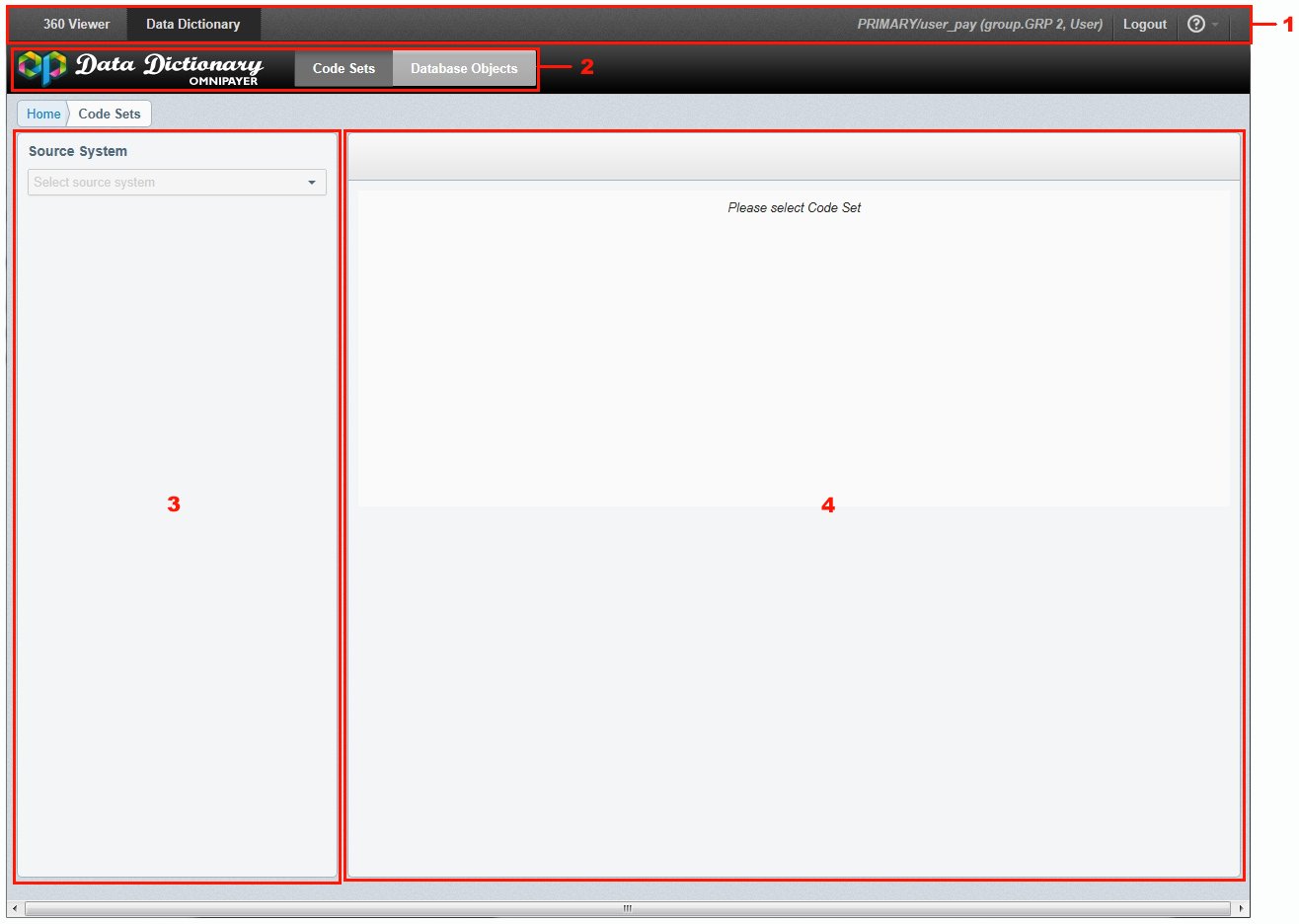
The Omni-Payer Data Dictionary page contains the following areas:
- Omni-Payer Management Central (OPMC) navigation menu.
- Top panel containing the Data Dictionary header and navigation tabs.
- Navigation panel.
- Details panel.
The OPMC navigation menu follows the standard behavior and allows you to navigate between the application modules.
Top Panel
The following image shows the top panel of the Omni-Payer Data Dictionary page in more detail.

The top panel contains the following areas:
- Omni-Payer Data Dictionary logo.
- Code Sets tab.
- Database Objects tab.
Code Sets Viewer
|
Topics: |
To navigate to the Code Sets tab, you must first click Data Dictionary in the Omni-Payer Management Central (OPMC) navigation menu. By default, before you select a source system from the drop-down list, the Details panel of the system is blank.
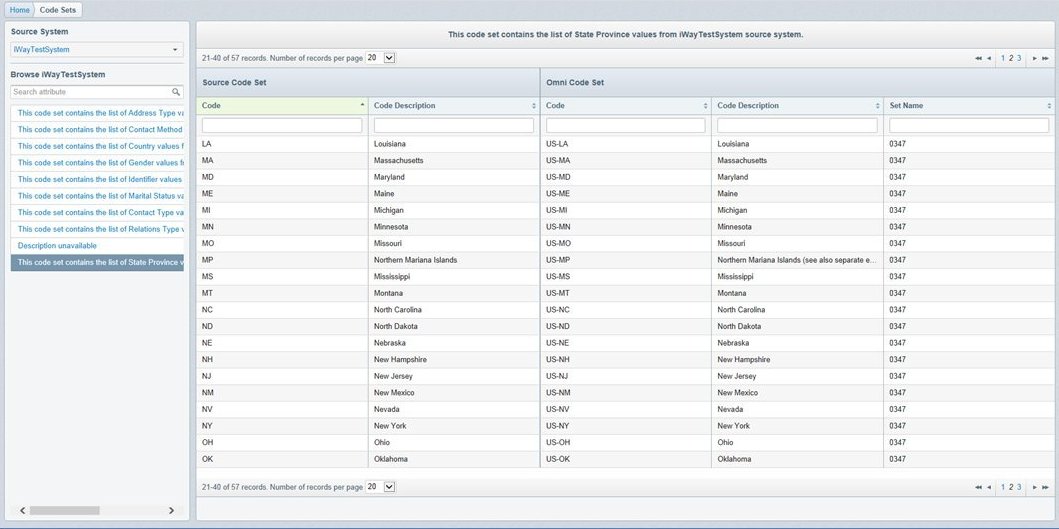
To begin working with code sets, you must select a source system from the Source System drop-down list in the Navigation panel.
The Source System drop-down list is populated with available source systems that can be selected, as shown in the following image.

Navigation Panel
Once a source system is selected from the Source System drop-down list, the Navigation panel is populated with a list of corresponding code sets for the selected source system, as shown in the following image.
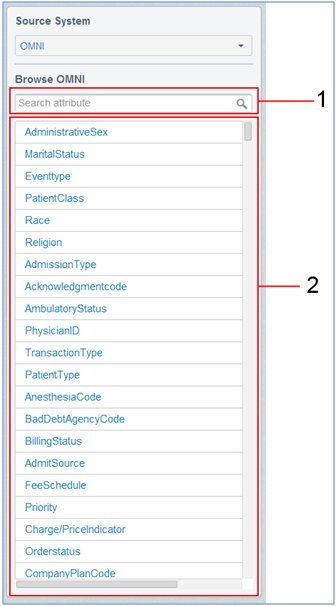
The Navigation panel contains the following areas:
- Search field.
- List of code sets for the selected source system.
Searching Code Sets
A search field is available in the Navigation panel, which allows you to search through a list of code sets. To search through a list of code sets, enter your search terms in the field and click the search icon to the right of the field or press Enter, as shown in the following image.
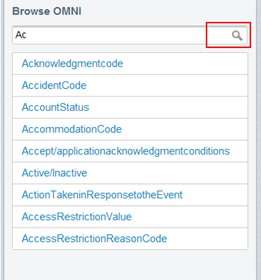
Note: The behavior of the search is not case-sensitive and locates only those code sets, that begin with the search term entered.
To cancel a search, delete any search terms in the field and click the search icon to the right of the field or press Enter.
Details Panel
|
Topics: |
You can select a specific node from the tree structure by clicking on the title of a subject area.
When you select a corresponding node, the Details panel displays the code set mapping information between the selected code set and Omni-Payer using a table format, as shown in the following image.
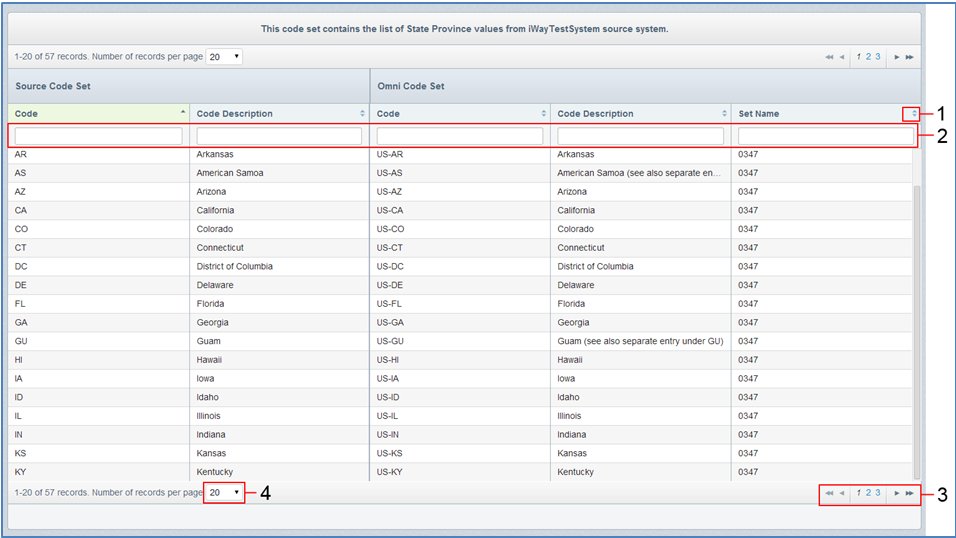
The structure of this table can be configured in the Administration Console if required. For more information, see Configuring Code Sets and Database Objects.
The code set table provides the following functionality:
- Sorting by columns.
- Filtering by multiple queries.
- Pagination.
- Drop-down list for the record quantity.
Sorting
You can sort the code set table by column by clicking on the column header or sorting icon.
The option to sort by columns can be configured in the Administration Console if required. For more information, see Configuring Code Sets and Database Objects.
Filtering
Inline filters can be used to quickly find a specific value. When a value is entered into the filter field at the top of each column, only rows that match this filtering criteria are displayed.
Filtering can also be applied by multiple queries. To discard filtered results, delete any filter terms in the filter field.
The option to filter can be configured in the Administration Console if required. For more information, see Configuring Code Sets and Database Objects.
Pagination
You can navigate through any pages of information that are returned by clicking on a specific page number, or clicking on the appropriate arrow. A single arrow moves to the next page (one page at a time). A double arrow takes you to the first or last page (depending on the direction selected). You can also select a number of records to display in the table by default by selecting a number from the drop-down list. The data will reload automatically.
Database Objects Viewer
|
Topics: |
The Database Objects Viewer shows the Table and Column details of the databases from which the data is imported into Omni-Payer, as shown in the following image.
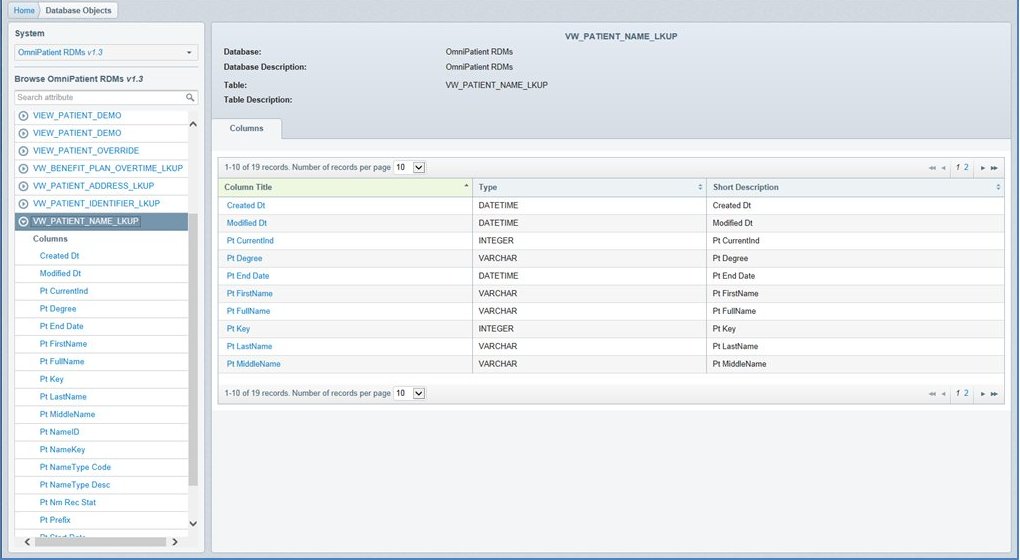
Navigation Pane
You can select the database systems with versions that are available for browsing from the drop-down list, as shown in the following image.
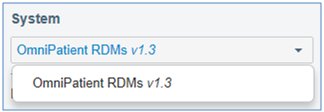
Once a system is selected from the drop-down list, the Navigation panel is populated with a tree of corresponding database objects (tables and columns), as shown in the following image.
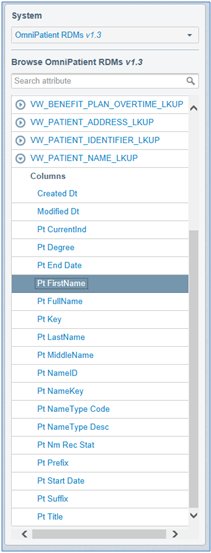
Searching Database Objects
The Navigation panel contains a search field, which provide functionality to search through a tree of corresponding database objects (tables and columns). To search through a list of database objects, enter your search terms in the field and click the search icon to the right of the field or press Enter.
The search is performed only for the source system that is currently selected. The behavior of the search is not case-sensitive and finds all tables and columns that match the search criteria, even partially.
If the node name of a child matches the query but not the parent, then all parent nodes are displayed and expanded.
The Details panel does not change until you select any of the search results or cancel the search.
To cancel a search, delete any search terms in the search field and click the search icon to the right of the field or press Enter.
Details Panel
You can select any node from the left pane and navigate the hierarchy as required. When you click on a table name header, the table node is expanded and the list of columns is displayed. At the same time, the Details panel is populated with the information about the selected object.
To view a column property, click a Column Title link in the Details panel or click a column in the navigation tree.
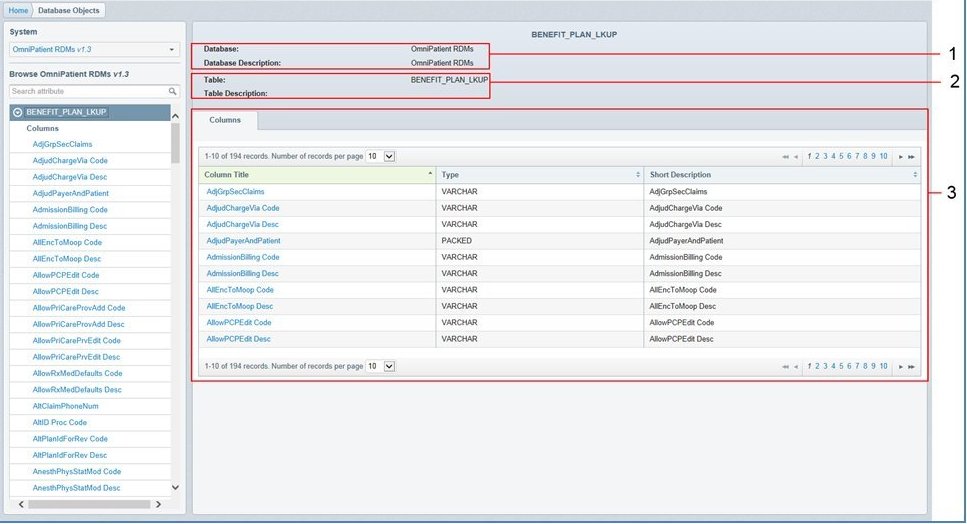
Information that can be displayed in the Details panel is metadata driven and can be configured in the Administration Console if required. For more information, see Configuring Code Sets and Database Objects.
The Details panel for a selected table contains:
- Database quick details.
- Table quick details.
- Table of columns that belong to that table, which includes descriptive information.
The following image shows the structure of the Details panel that is displayed when a database object is selected.
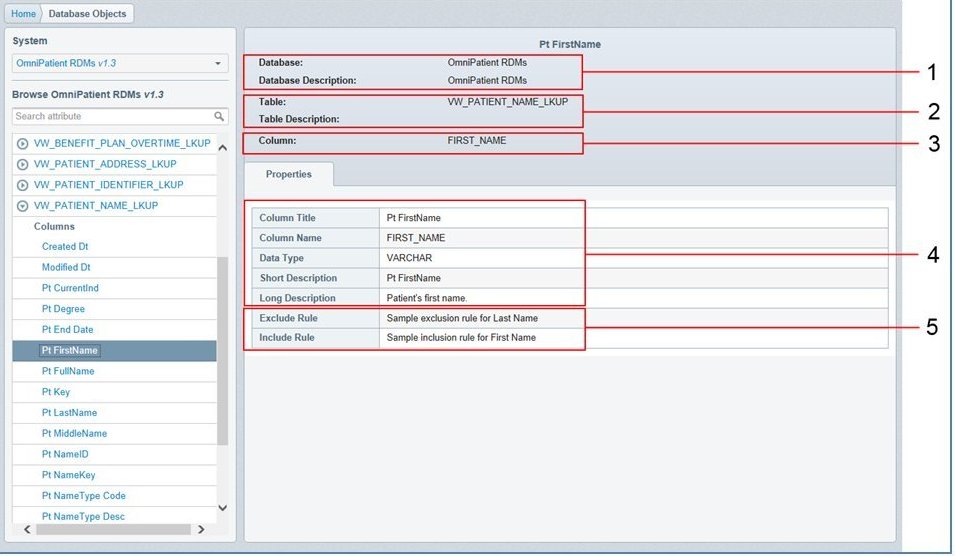
The Details panel contains the following information:
- Database quick details.
- Table quick details.
- Column quick details.
- Column full information.
- Include and Exclude rules if they exist.